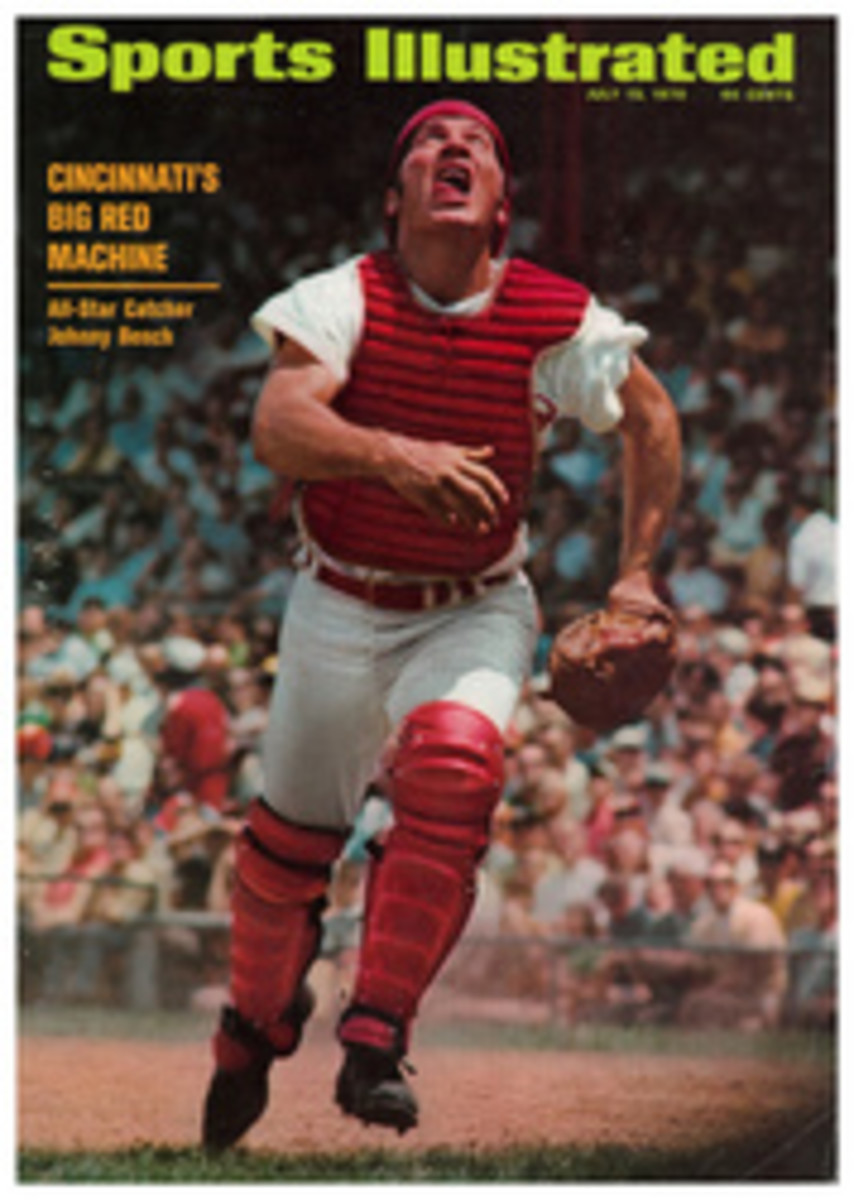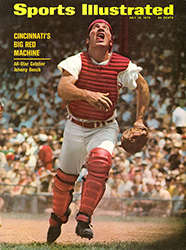
Hanging in for Women's Lib
On Sunday afternoon Donna Caponi, a 25-year-old Californian, walked shakily off the 18th green of the Muskogee Country Club, the winner by a stroke of the 1970 Women's Open and for the second successive year the country's champion female golfer. To defend her title Donna had beaten 126 other women with all the attendant liver-eating and agony that customarily go with such an accomplishment. Also she had walked 15 miles over the fields through 100° heat under an Oklahoma sun that stood not much higher than an elephant's eye. Just for good measure, Donna and the other girls had played some of the holes to a serenade of firecrackers set off by good old Oklahoma boys celebrating the national birthday. To the environmental hazards Donna added some horrendous golf on the 72nd hole, which she double-bogeyed with six shots that would have driven the average hacker straight to his local pro for six jiffy lessons in how to hit—well, just about any shot you can name.
Still, when the scores were totaled and the gauntlet, so to speak, run, Donna picked up a non-negotiable trophy and a check for $5,000. Taken out of context, the money may seem more than adequate compensation for playing any sort of a game under any conditions. However, if this were a just and severely rational world, Donna's check would have been for $30,000, the amount paid Tony Jacklin a few weeks ago for winning the men's U.S. Open. Which is another way of saying Muskogee made Women's Lib seem pretty reasonable.
Assuming that any golf tournament is worth paying to watch, then by objective standards of judgment a good women's match is in many ways a better buy than stag golf. It is possible to see what is going on, for one thing, crowds being moderate and opportunities for close association with the performers many. At men's shows, the Armies and Fleas prevent all but the most persistent and pugnacious from seeing much. And a lithe, emotionally expressive girl in a short skirt generally makes a more attractive spectacle than a paunchy, balding male who, for reasons of masculine tradition and ego, usually wears a frozen, I-am-stalking-a-lion, do-not-disturb mask.
So why did Donna carry away only $5,000 and Tony $30,000? The main reason, of course, lies in the almost incredibly explosive power of the men's game; a lot of good weekenders could have matched Miss Caponi at Muskogee, but who could have challenged Jacklin at Hazeltine? But in addition there is a deep-rooted attitude at large in the nation that the Girl Next Door ought to damn well stay there—symbolically at least—and that girls who don't are some kind of freaks. And any girl who moves away to play golf for money is doubly freaky, if not downright kinky.
Touring women golf professionals, it is true, do not look exactly like the Girl Next Door, being as a rule more tanned, fit and muscular. Their life style is nomadic and therefore suspect. When, as Jo Ann Prentice once put it, they come to town and then go out on it, they are stigmatized as swingers; when they stay in their motels and relax, they raise other sorts of questions.
But women pros live lives that would drive many Girls Next Door right up the walls. They master intricate skills beyond the temperamental and physical capacities of most. And they endure for paltry sums professional indignities no male pro would countenance.
So it was at Muskogee. It was a tournament in which the amateurs—golf's equivalent of the Girls Next Door—were not a factor. The thing was settled among the pros—the Caponis, the Manns, Englehorns, Spuziches, Whitworths, Prentices and Haynies—and ultimately between two of them on the final green.
On the first two days it had been Donna and Carol Mann, who came to Muskogee with her golf game shaky, her need acute to justify it and herself. "I want to get back together," Carol had said. Thursday and Friday she did, playing three under par and sharing the lead with her good friend Donna. But on Saturday she lost it, and her 77 dropped her back of the pace, behind a bunch of girls named Sandra. Donna Caponi, meanwhile, had the Open practically won on Saturday. The three Sandras—Haynie, Spuzich and Palmer—lagged four or more strokes back, and Donna seemed impervious to sun, heat and fireworks.
In point of fact, she was beginning to unravel and, going into No. 18 on Sunday with a two-stroke lead, she saw her game nearly collapse. She hooked her drive, pushed a second shot wide and short of the green, pitched over it, scuffed a chip and finally got on, needing a five-foot putt to win. The ball fell into the cup only in its act of dying, and after the earth turned just enough to help.
Strangely enough, of all the women pros, Donna Caponi seems most easy to identify with the average girl. Her father and younger sister Janet both follow the same calling, and turning professional seemed, if anything, normal for her. But the image is misleading. "I know it sounds terrible," she said before the Open, "but I know I am going to win. I've been charging myself up for this for months."
What might fairly be said is that Donna Caponi is a thoroughly professional woman with the kind of discipline, stability and fortitude that the really ideal Girl Next Door could well use.
PHOTO
WAS DONNA'S CHECK $25,000 SHORT?

